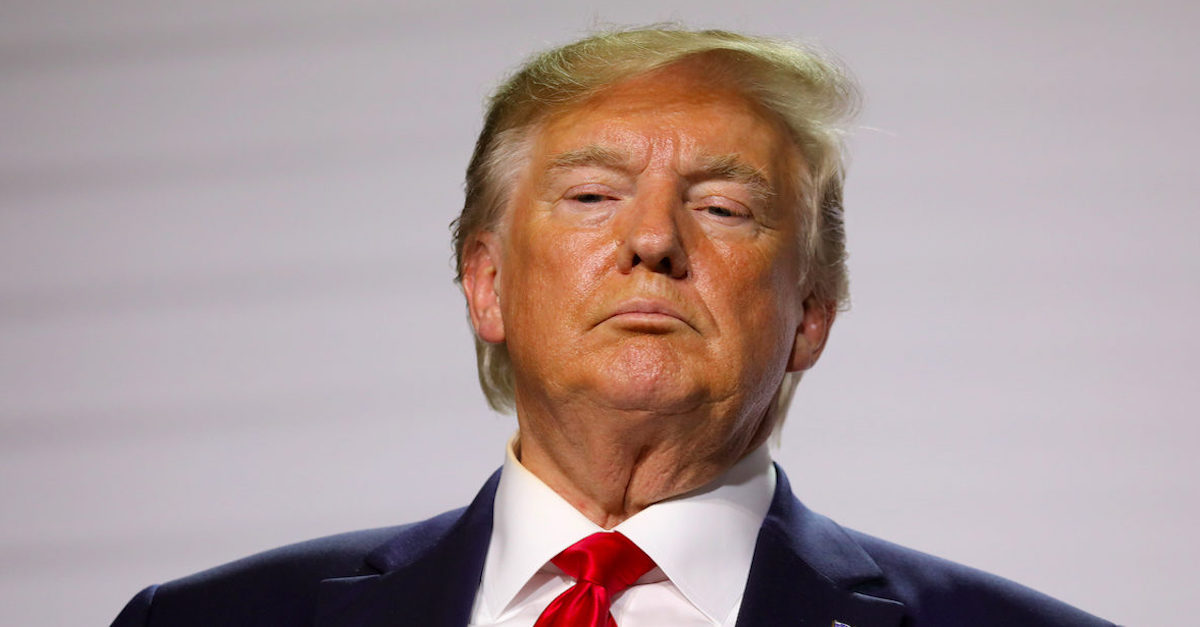
As we noted would almost certainly be the case, the Supreme Court has granted a temporary stay in Trump v. Mazars USA, LLP.
What was the underlying dispute here?
The House Oversight Committee subpoenaed finance firm Mazars USA to produce Donald Trump‘s tax returns and other financial documents. Trump’s legal team moved to quash the subpoena on a number of grounds, and lost. He then appealed the court’s adverse ruling up to the D.C. Circuit Court of Appeals. A panel of that court, too, ruled against Trump (2-1), and issued an order that Mazars USA produce the documents. Trump appealed to the D.C. Circuit, asking for a rehearing by the full Circuit Court of Appeals – and his request was denied. On Friday, Team Trump filed an emergency appeal to the U.S. Supreme Court, asking for an administrative stay of the lower court’s order, which brings us to Monday’s ruling.
In a two-sentence order, SCOTUS stayed the D.C. Circuit’s order until November 21, 2019, when House Dems can respond to Trump’s filings. Monday’s stay does not constitute a monumental legal precedent; it is not a decision announcing the Court’s opinion as to whether or not it agrees with the D.C. Circuit’s logic or decision; it not a decision about whether Mazars USA must produce the documents. Rather, it is an administrative stay that maintains the status quo while the Court waits for everyone to get their filings in on the issue of certiorari.
Does the stay mean the court is planning to side with Trump on the subpoena issue?
Not necessarily.
As University of Texas Law Prof. Steve Vladeck pointed out, the stay likely doesn’t indicate much about the Court’s feelings about presidential subpoenas. In order to convince SCOTUS it should stay the lower court’s order (and hold off on enforcing the subpoenas), Trump would have had to show two things: 1) without a stay, he’d suffer irreparable harm; and 2) once the underlying dispute gets before SCOTUS, it’s got a pretty good chance of succeeding on its merits.
It’s hardly shocking that the court determined that the irreparable harm requirement was met; there would certainly be no returning the tax returns to the shroud of secrecy once they were released. Finding that Trump’s appeal has a “likelihood of success on the merits” (as is the legal standard) means that SCOTUS is willing to be cautious in the short term — but doesn’t indicate a whole lot more. Proving that a stay is appropriate is far easier for a short-term interim ruling than in one meant to last the duration of a Supreme Court appeal.
In fact, it’s a long walk between the short-term freeze of an administrative stay and a Supreme Court order throwing out the Mazars USA subpoenas. First, SCOTUS would need to rule Friday to keep the stay in place pending the entirety of the appeal. Then, it would have to grant certiorari to even hear the case in full. Finally, a majority of the Court would need to side with the president – not an easy ask when the underlying legal issues go to the heart of separation of powers.
What’s going to happen next?
The Trump legal team will be working overtime this week. Their cert petition in Trump v. Vance (another case, also challenging subpoenas for Trump’s tax returns) was filed last Thursday. Manhattan DA Cy Vance has until this Thursday to file a brief in opposition. Trump lawyers will then have three days to respond, meaning “the briefing on the cert petition should be complete by Monday, November 25,” per Prof. Vladeck.
SCOTUS will then need to consider whether to take up both cases, and if so, in what order.
[image via Ludovic Marin/AFP/Getty Images]